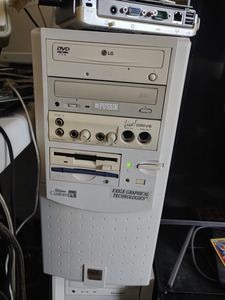First post, by Y2KBazo
- Rank
- Newbie
Was thinking about swapping out my TNT2 Ultra in my millennium machine for a gf2 GTS or a 9700/9800 but im a bit worried about overstepping my 20 year old 250 watt aopen psu that is running everything under the sun already.
In the machine ive got a pIII 733 on an AX34 board with 256 in all 3 slots.
Diamond Viper V770 TNT2 Ultra
A soundblaster live 4760 with live drive and a yamaha YMF724 card of sorts
Some dlink 10/100 lan card
Promise Ultra133 laying dormant.
160gb wd blue hard disk
Dvd and cd writer, 3.5 flopp and 750mb ZIP
2 modern 90mm fans
Wondering if id blow up my machine with all these accesories and a more modern t&l card, and if there was a place to look up power consumption figures on older hardware like this?
Thanks a bunch!
Millennium Box: PIII 733EB, Aopen AX34 w/ 512MB CL2, Geforce 2 TI 64MB, Sb Live! ct4760 w/ Live! Drive.
3Dfx Box: DEC Venturis 5133, Pent 133, 64MB EDO, Voodoo 1 4MB, Awe64 Value.


